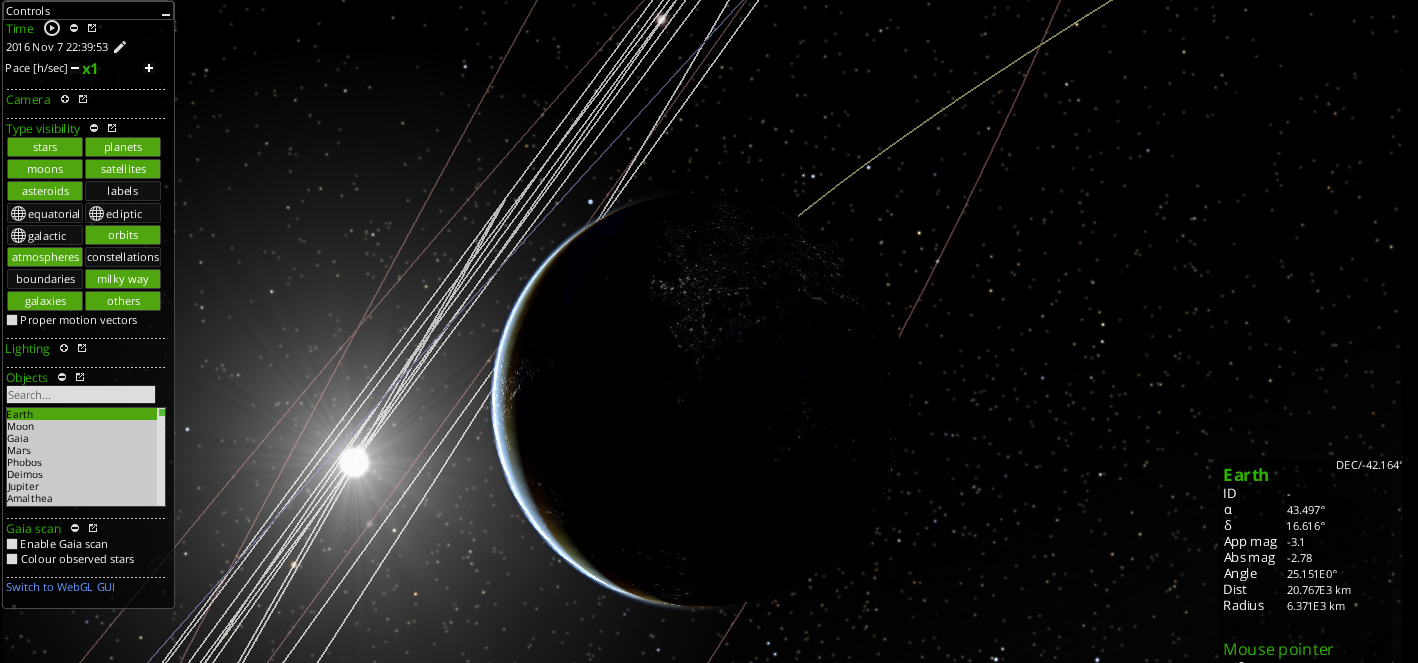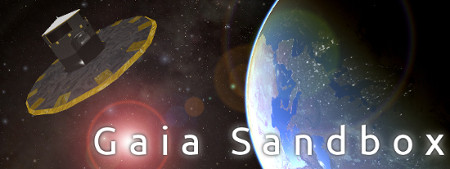
Gaia Sky version 1.0.0
Last September 14 the first Gaia catalog, Gaia Data Release 1, was made public. To celebrate the occasion, we also released version 1.0.0 of our virtual Universe software, Gaia Sky. This time around, the software comes with big improvements and lots of new features, the most prominent of which is the addition of the TGAS catalog, a part of Gaia DR1 which contains 3D positions for approximately 2 million objects. Check out the release trailer.
Today I’m releasing version 0.800b of Gaia Sky, probably the last beta version before version one, which will come in late summer with GDR1 (Gaia data release 1).
This time around we bring on loads of improvements, bug fixes and new features. Here is a comprehensive change log:
- Reimplemented star render algorithm, now all stars are shaded as points in the GPU.
- New Milky Way rendering with 40K particles and 100 nebulae.
- Three graphics quality settings, low, normal and high, which have an impact in the size of textures, the complexity of the models and the quality of the graphical effects.

Gaia Sky WebGL version
The Gaia Sky software, former Gaia Sandbox, (and in particular its WebGL ports) has been chosen by ESA to be Gaia Image of the Week. The WebGL version includes a spinoff –called A Window to Gaia: The Focal Plane – which displays in real time the Tycho-2 stars that are being observed by Gaia. The WebGL ports have problems with mobile browsers and also with Safari, but they should work well with Google Chrome and Firefox (the former is significantly faster than the latter).
I have been working hard these last couple of months and today I’m proud to announce the release of the second beta version of the Gaia Sandbox, the open source, free, astronomy sandbox focused on the Gaia mission.

Gaia Sandbox
Today we have published the first public BETA version (v0.703b) of the Gaia Sandbox, a real-time, 3D, astronomy visualisation application that runs on Linux, Windows and MacOSX systems. Its main purpose is to serve as an outreach platform to ESA’s Gaia mission, and it is free (as in freedom and gratis). It is also open source under the LGPL, so go try it out!
Turns out the German physics educational journal Physik in unserer Zeit (Physics in our time) published a thorough review of one of my Android apps, the Particle Physics Simulator back in January 2014. One of the authors of the article, Jan-Philipp Burde, contacted me a while back to let me know that he was preparing the article and to ask some information on how the code works, which I gladly provided. Then, he kindly contacted me again when the article was published in the January 2014 issue of the journal.
For what I could understand with my still basic German, the article talks about how the app can aid in the teaching of gas dynamics, providing some hints on the configuration set-up (no gravity, elastic collisions, etc.) in order to simulate a gas. For example, it teaches how to illustrate the concept of Brownian motion, removing the gravity and creating several small-sized particles along with one or two big-sized particles.


